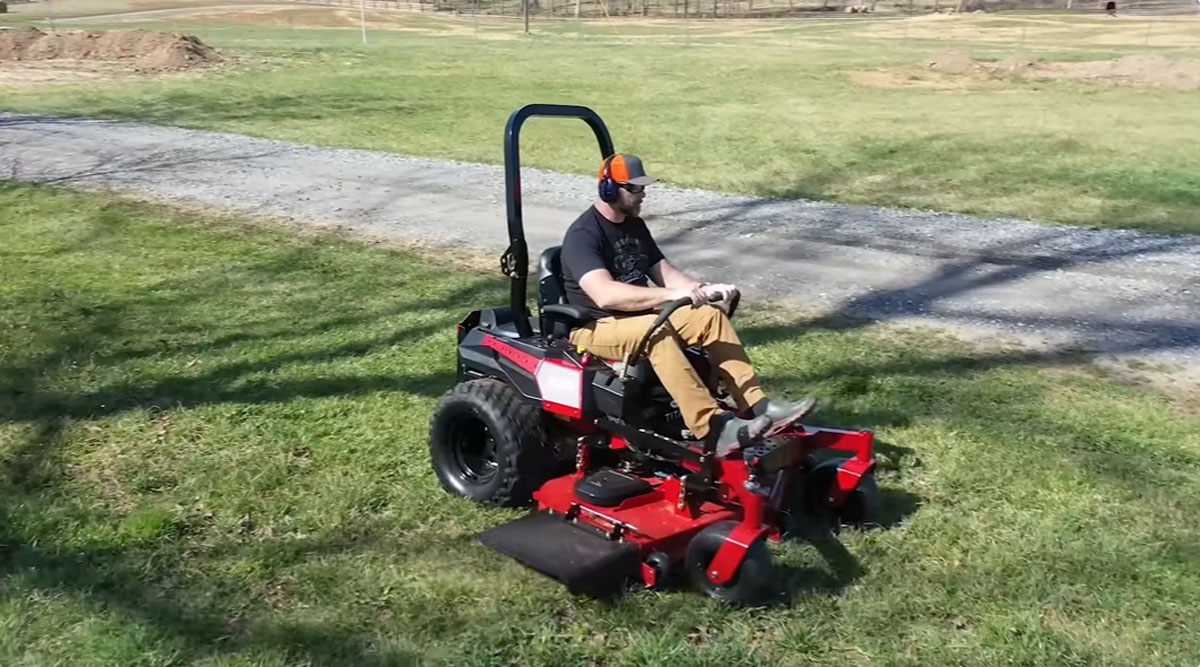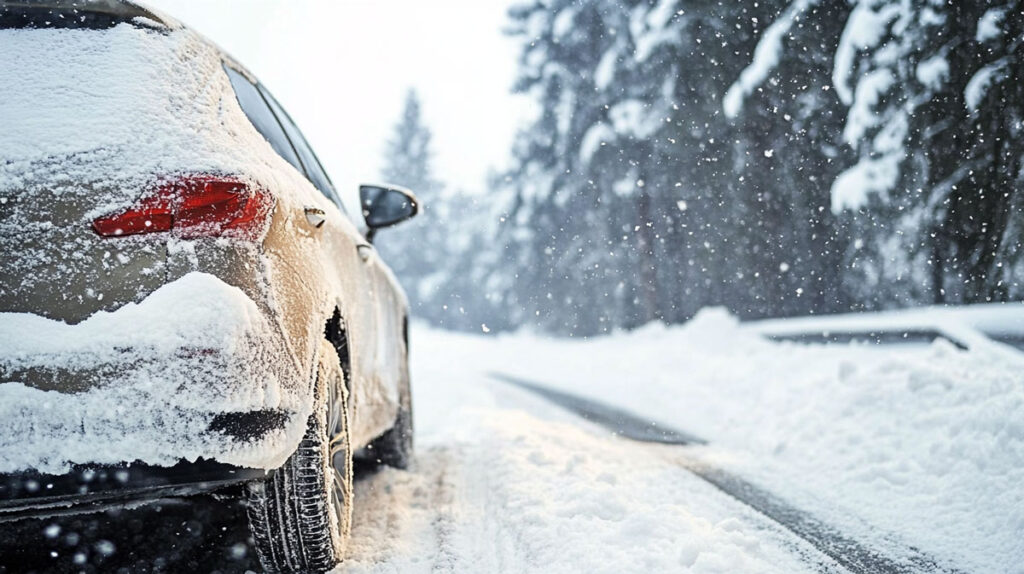A zero turn mower represents a significant advancement in lawn care technology, offering precision and speed that traditional riding mowers cannot match. These innovative machines have transformed from commercial landscaping tools into popular residential equipment. The unique steering system allows the mower to pivot 180 degrees without leaving its position, creating perfectly trimmed lawns in less time.
The development of zero turn technology dates back to the 1950s when agricultural innovations led to more efficient lawn care solutions. Today’s zero turn mowers combine powerful engines, precise controls, and cutting-edge features to deliver professional results for both commercial operators and homeowners.
The name “zero turn” comes from the mower’s ability to make zero-degree turns, eliminating the wide turning radius common to traditional riding mowers. This capability dramatically reduces mowing time and creates crisp, clean lines across your lawn.

Understanding Zero Turn Mower Technology
The fundamental difference between a zero turn mower and traditional riding mowers lies in the steering system. Instead of a steering wheel, zero turn mowers use two control levers that independently operate the drive wheels.
When you push both levers forward, the mower moves straight ahead. Pull them back, and it reverses. The magic happens when you push one lever forward while pulling the other back – this creates the signature zero-degree turn that gives these mowers their name.
The Drive System Explained
Zero turn mowers utilize hydrostatic transmissions for each rear wheel. These transmissions convert engine power into hydraulic pressure, providing smooth, variable-speed control. The system enables operators to adjust speed instantly and make precise movements.
Cutting Deck Design
The cutting deck on a zero turn mower typically sits at the front of the machine, providing excellent visibility of the mowing path. Deck sizes range from compact 34-inch models suitable for smaller yards to commercial-grade 72-inch decks for large properties.
Modern zero turn mowers incorporate advanced deck designs that optimize airflow for superior grass cutting and clipping distribution. Many models feature adjustable cutting heights and multiple blade configurations to handle different grass types and conditions.
Advantages of Zero Turn Technology
The benefits of zero turn mowers extend beyond their impressive turning capabilities. These machines offer numerous advantages that make them increasingly popular among homeowners and professionals alike.
Time-Saving Performance
Professional landscapers report completing jobs up to 50% faster with zero turn mowers compared to traditional riding mowers. The ability to navigate obstacles efficiently and make quick turns at the end of each pass dramatically reduces mowing time.
Superior Maneuverability
Zero turn mowers excel at navigating around trees, flower beds, and other landscape features. The precise control system allows operators to trim close to obstacles without damaging plants or structures.
Professional-Quality Results
The combination of consistent cutting speed and precise control produces even, professional-looking results. Zero turn mowers create crisp stripes and patterns that enhance the visual appeal of any lawn.
Choosing the Right Zero Turn Mower
Selecting the appropriate zero turn mower requires careful consideration of several factors. Understanding these elements helps ensure you invest in a machine that meets your specific needs.
Residential vs Commercial Models
Residential zero turn mowers typically feature smaller engines and cutting decks, making them ideal for properties up to three acres. These models balance performance with affordability and ease of use.
Commercial models offer larger cutting decks, more powerful engines, and enhanced durability features. They’re designed for continuous operation and can handle extensive mowing requirements.
Engine Options and Power Considerations
Modern zero turn mowers come equipped with various engine options, ranging from 20 to 35 horsepower. Engine choice affects mowing speed, performance on slopes, and the ability to handle thick grass.
Higher horsepower engines provide better performance but typically consume more fuel. Consider your property’s terrain and grass conditions when selecting engine size.
Deck Size Selection
Choosing the appropriate deck size involves balancing efficiency with maneuverability. Larger decks cut more grass per pass but may struggle in tight spaces or on uneven terrain.
A general rule suggests: Small yards (up to 1 acre): 34-42 inch deck Medium yards (1-2 acres): 42-50 inch deck Large yards (2+ acres): 50-72 inch deck
Operating Techniques and Best Practices
Mastering zero turn mower operation requires practice and understanding of proper techniques. Following these guidelines helps ensure safe, efficient operation and optimal results.
Basic Control Fundamentals
New operators should start at low speeds to familiarize themselves with the dual-lever control system. Practice making gradual turns and maintaining straight lines before attempting more advanced maneuvers.
Advanced Mowing Patterns
Experienced operators can create attractive lawn patterns by alternating mowing directions. This technique not only enhances appearance but also promotes healthier grass growth by preventing ruts and compaction.
Safety Considerations
Zero turn mowers require attention to safety, particularly when operating on slopes or near obstacles. Always maintain appropriate speed and avoid sudden movements that could compromise stability.
Maintenance Requirements
Proper maintenance ensures reliable performance and extends the life of your zero turn mower. Regular care prevents costly repairs and maintains optimal cutting quality.
Daily Inspections
Before each use, check oil levels, tire pressure, and blade condition. Inspect belts for wear and ensure all safety features function properly.
Seasonal Maintenance Tasks
Perform more comprehensive maintenance at the beginning and end of each mowing season. This includes oil changes, filter replacements, and thorough cleaning of the deck and engine compartments.
Professional Service Recommendations
Schedule professional service annually or after specific hour intervals as recommended by the manufacturer. Professional technicians can identify potential issues before they become serious problems.
Common Challenges and Solutions
Understanding common challenges helps operators address issues effectively and maintain optimal performance.
Slope Operation
Zero turn mowers require special care when operating on slopes. Maintain steady speed and avoid sharp turns. Some models perform better on inclines than others, so consider terrain when selecting a mower.
Turf Protection
Prevent lawn damage by avoiding sharp turns on wet grass. Make wider turns or three-point turns when necessary to protect turf integrity.
Weather Considerations
Adjust cutting height and speed based on weather conditions. Taller grass settings during dry periods help maintain lawn health, while slower speeds in wet conditions prevent clumping and ensure even cutting.
Environmental Impact and Efficiency
Modern zero turn mowers incorporate features that reduce environmental impact while maintaining high performance.
Fuel Efficiency Innovations
Newer models feature improved fuel efficiency through advanced engine design and optimized cutting systems. Some manufacturers offer alternative fuel options, including propane and electric models.
Noise Reduction Technology
Engineering advances have resulted in quieter operation without sacrificing power. This benefits both operators and nearby residents.
Emissions Compliance
Current models meet strict emissions standards while delivering robust performance. Some manufacturers exceed requirements, demonstrating commitment to environmental responsibility.
Future Developments
The zero turn mower industry continues to evolve with new technologies and features enhancing performance and user experience.
Electric Power Integration
Battery-powered zero turn mowers are gaining popularity, offering quiet operation and zero emissions without sacrificing cutting power.
Smart Technology Features
Manufacturers are incorporating smart features like automated speed control, GPS guidance, and maintenance tracking systems.
Autonomous Operations
Development of self-driving capabilities promises to revolutionize lawn care, though current technology requires operator supervision.
Making the Investment
Purchasing a zero turn mower represents a significant investment in lawn care equipment. Understanding the financial aspects helps make informed decisions.
Cost Considerations
Initial purchase prices vary widely based on size, features, and intended use. Consider long-term value, including maintenance costs and potential time savings.
Return on Investment
Professional users often recover costs through increased efficiency and expanded service capabilities. Homeowners benefit from time savings and improved property appearance.
Financing Options
Many dealers offer financing programs making premium zero turn mowers more accessible. Compare terms and consider seasonal usage when evaluating payment plans.
Frequently Asked Questions
Can You Operate a Zero Turn Mower with One Hand?
While manufacturers design zero turn mowers for two-handed operation, experienced operators develop techniques for brief one-handed control during straight runs. This requires significant practice and should not be attempted by beginners.
How Do Zero Turn Mowers Perform on Slopes?
Zero turn mowers require special attention on slopes. Their rear-wheel drive design and weight distribution make them more challenging to operate on inclines compared to traditional lawn tractors. For steep slopes, experts recommend:
Moving across slopes rather than up and down Maintaining steady speed without sharp turns Using wider turning patterns to maintain stability Considering alternative equipment for very steep terrain
What Makes Zero Turn Mowers More Expensive?
The higher cost of zero turn mowers reflects their advanced technology and dual hydrostatic transmission systems. Each rear wheel requires its own transmission, increasing both initial cost and maintenance expenses. The sophisticated cutting deck design and professional-grade components also contribute to the price.
How Long Does it Take to Master Zero Turn Operation?
Most homeowners become comfortable with basic operation within two to three mowing sessions. Professional-level skill, including precise trimming and efficient patterns, typically develops over several weeks of regular use. Starting at lower speeds helps build confidence and control.
Can Zero Turn Mowers Handle Wet Grass?
Zero turn mowers can operate in wet conditions, but require additional precautions:
Reduce speed to prevent turf damage Avoid sharp turns that might tear grass Clean the deck frequently to prevent clumping Consider raising the cutting height slightly
Conclusion
Zero turn mowers have revolutionized lawn care by combining speed, precision, and ease of use. Whether maintaining a residential property or operating a commercial service, these machines offer significant advantages over traditional mowing equipment.
The technology continues to advance, with new features and capabilities expanding the potential applications. Understanding the options and requirements helps ensure successful selection and operation of these versatile machines.
For anyone serious about lawn care efficiency and quality results, zero turn mowers represent a compelling choice. Their ability to reduce mowing time while improving cut quality makes them an invaluable tool for maintaining beautiful, healthy lawns.



